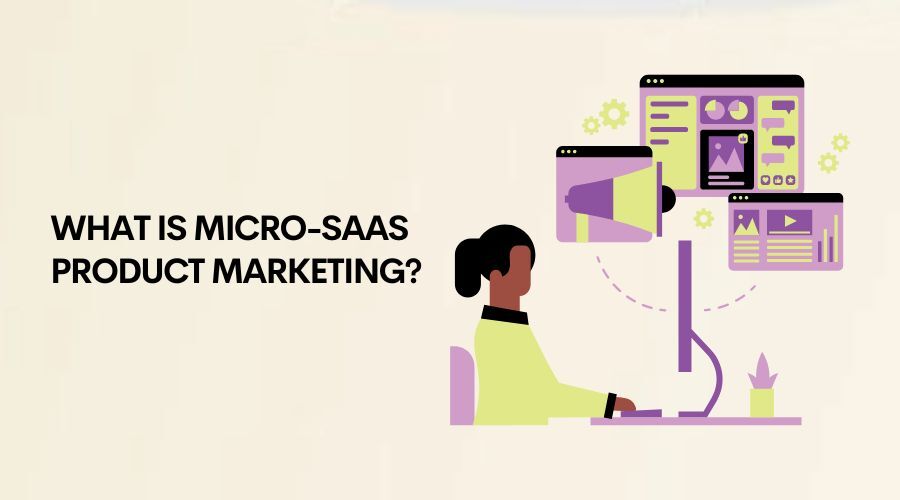What is SaaS product marketing?
SaaS has become more and more popular in recent years, but many people still find its marketing aspect unfamiliar.
But did you know that successful SaaS companies use half of their sales on their marketing alone?
While you might not spend that much at first, understanding how to promote your micro-SaaS product to get users is a must.
So, in this article, we’ll discuss SaaS product marketing in detail and share some steps to include in your marketing strategy.
What Is SaaS Product Marketing?
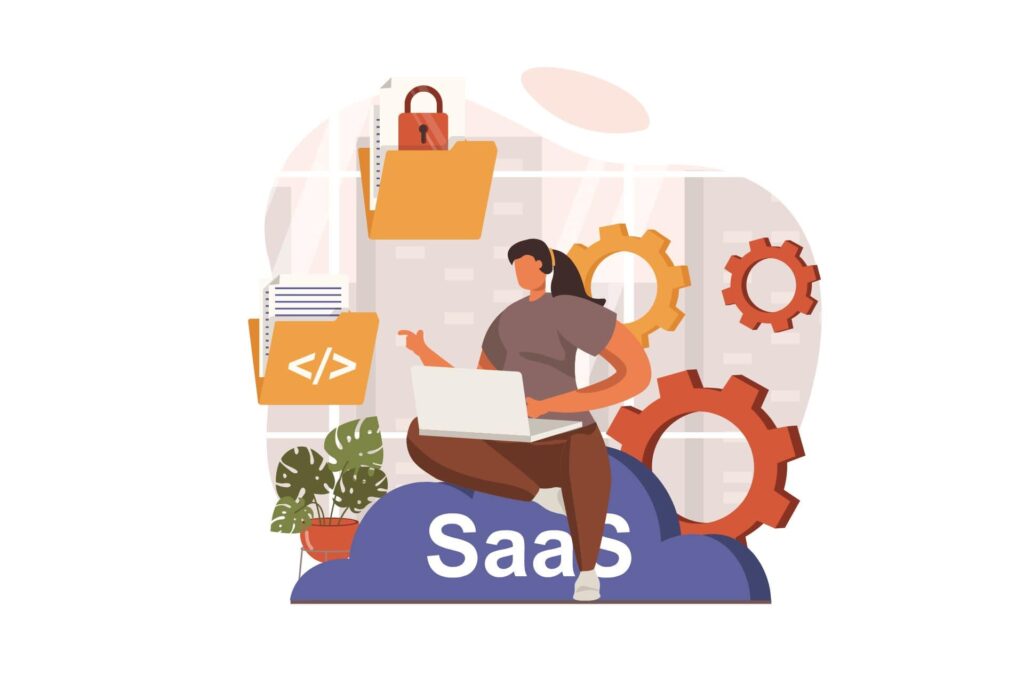
In simple terms, SaaS product marketing is where you promote and sell subscription applications.
Because they depend on recurring fees, getting new customers and keeping existing ones is crucial.
That’s why you’ve got to use various tactics in different stages of your micro-SaaS marketing.
What Makes SaaS Product Marketing Different from Traditional Product Marketing?
While they share some similarities, some key differences make product marketing unique for SaaS and micro-SaaS companies.
First, the SaaS marketing sales cycle is often shorter than the traditional one.
Since SaaS products are cloud-based, customers can sign up and use the software right away.
They don’t need to purchase or install any physical hardware, so this saves them from lengthy buying processes or time-consuming installations.
Another difference between the two is the revenue models.
SaaS companies get revenue through their subscribers, while traditional businesses usually go for one-time sales.
Lastly, customer retention is more critical in the world of SaaS and micro-SaaS.
Traditional marketing mostly focuses on qualified leads, which are usually people with the highest chance to convert as new customers.
Meanwhile, SaaS marketers need to put their efforts into getting new users and ensuring that their existing customers are happy.
This makes the latter critical to the company’s recurring revenue and long-term success.
Steps to Marketing a Micro-SaaS Product
SaaS product marketing strategies typically comprises two phases:
- pre-launch phase, and
- post-launch phase.
Let’s explore each stage.
Pre-launch SaaS Product Marketing Strategy
The pre-launch stage focuses on creating a buzz around your product and stirring interest among possible customers.
The main goal here is to get trial users whom you can later turn into paying consumers.
Additionally, it sets the stage for a smooth transition to the post-launch phase.
Because of this, you have to create a detailed strategy at this point of your product marketing.
That involves identifying different tactics to attract and engage your target audience.
Here are some of the best ways to have a successful pre-launch:
1. Position your product
The first thing you need to do is to define your product’s unique value proposition (UVP).
This will set you apart from competitors and highlights its most significant benefits.
Your UVP should show how your product solves a specific problem or how it addresses a particular pain point.
For example, let’s say your SaaS product is a simple project management tool. Your target subscribers are companies with remote employees in their marketing or sales team.
To appeal to this audience, you can stress your software’s ability to streamline communication, simplify task management, and boost team productivity.
2. Develop your customer persona
A customer persona represents your ideal customer. It’s usually based on research, thus making it semi-fictional.
It covers their demographics, preferences, goals, and problems.
To create a customer persona, you can gather data through market research, customer interviews, and surveys.
Afterward, you must work on this information and create a user profile.
Having a clear customer persona is important in your micro-SaaS marketing strategy.
It helps you create customized marketing campaigns that resonate better with your audience.
Moreover, it allows you to align your product features with your target customers’ needs.
If you need a free tool to generate your persona, check out Hubspot’s Make My Persona.
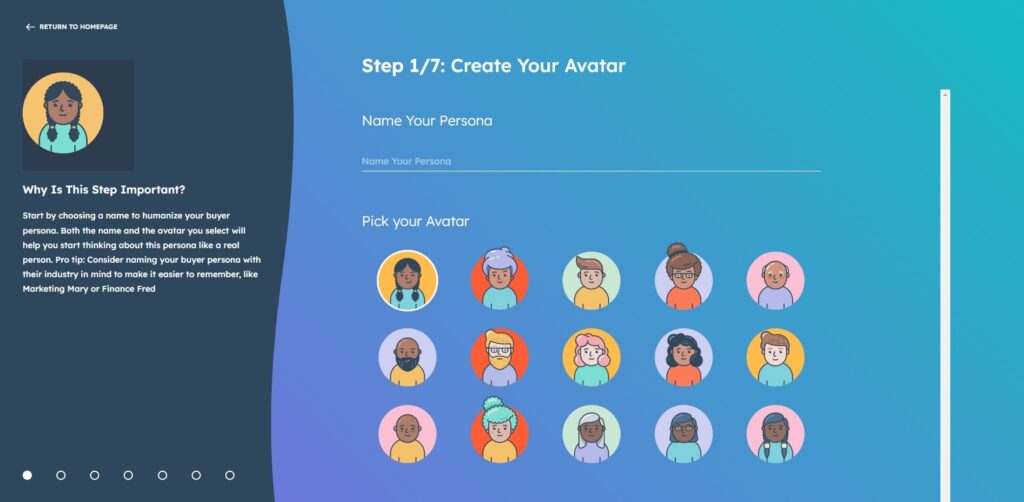
3. Identify your competitors in the market
Another thing you have to do for your pre-launch is to understand the competitive landscape.
Not only does this allow you to discover hidden opportunities; it also helps you differentiate your product from other micro-SaaS ideas.
To identify competitors, start by researching companies offering similar software as you do.
You can discover them online through social media platforms or search engines.
But if you want a tool to help you do this process faster, check out SEMrush. It offers various competitive analysis tools, such as:
- organic research;
- advertising research;
- backlink analysis, and;
- traffic analytics.
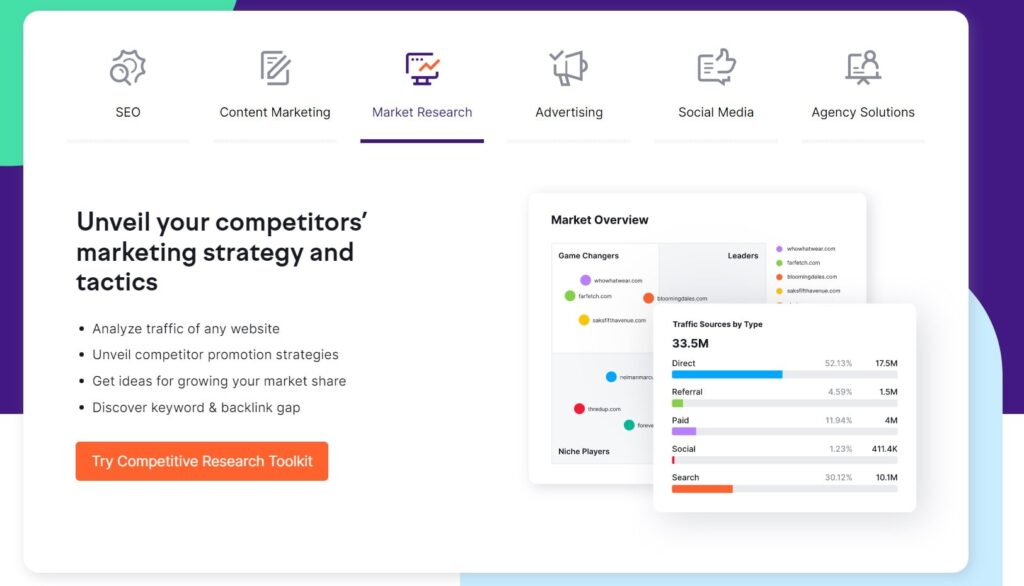
Once you’ve identified your competitors, analyze their marketing strategies, strengths, and weaknesses.
This information can be invaluable in helping you find gaps in your competitors’ offerings and shaping your product marketing success.
You can also use the data you gathered to fill in or discover UVPs that will help you attract micro-SaaS customers.
Another great tool to learn about your competitor’s website status is GrowthBar SEO’s Competitor Research.
4. Map your customer journey
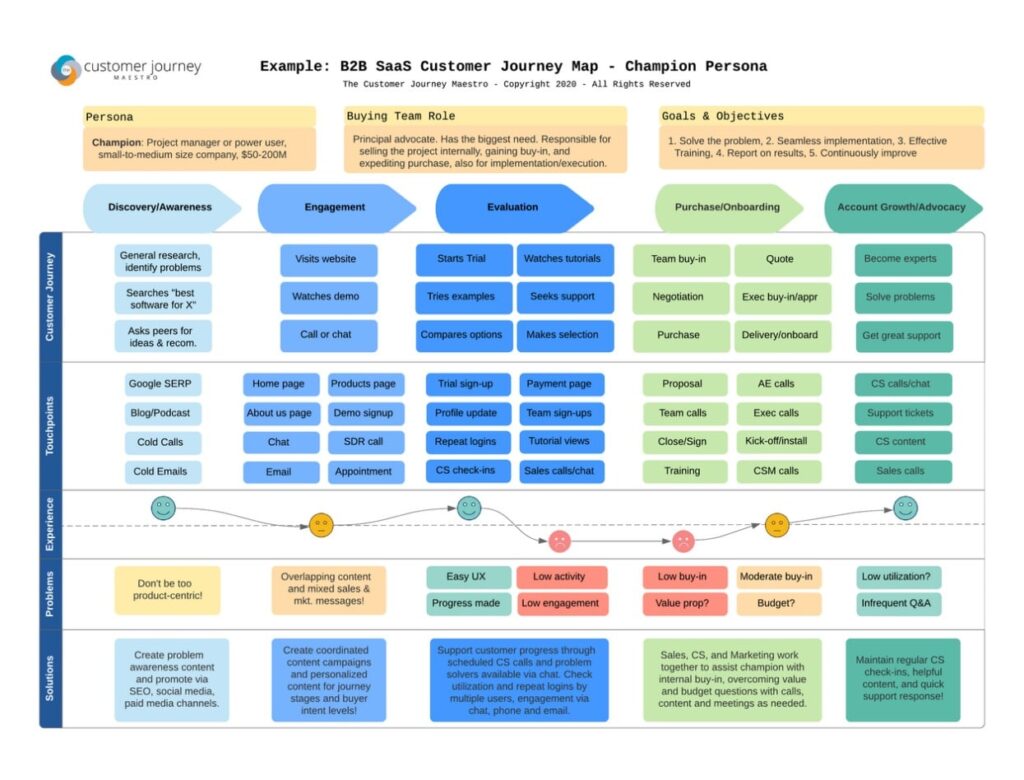
Customer journey refers to the stages a customer goes through when interacting with your brand.
It starts from their initial awareness of your product to them becoming your loyal advocates.
The standard stages goes from awareness to consideration, to conversion, retention, and advocacy.
Understanding the customer journey is essential for SaaS and micro-SaaS marketing since it helps you identify touchpoints to engage with and delight your audience and users.
To improve your customer journey, you need to:
- deliver relevant content;
- offer timely support, and;
- provide personalized experiences at each stage.
You must also observe your audience and improve your process to create a smoother path.
Using tools like Lucidchart and Hotjar can help you in this step.
Lucidchart is a diagram tool to create a visual version of a customer journey.
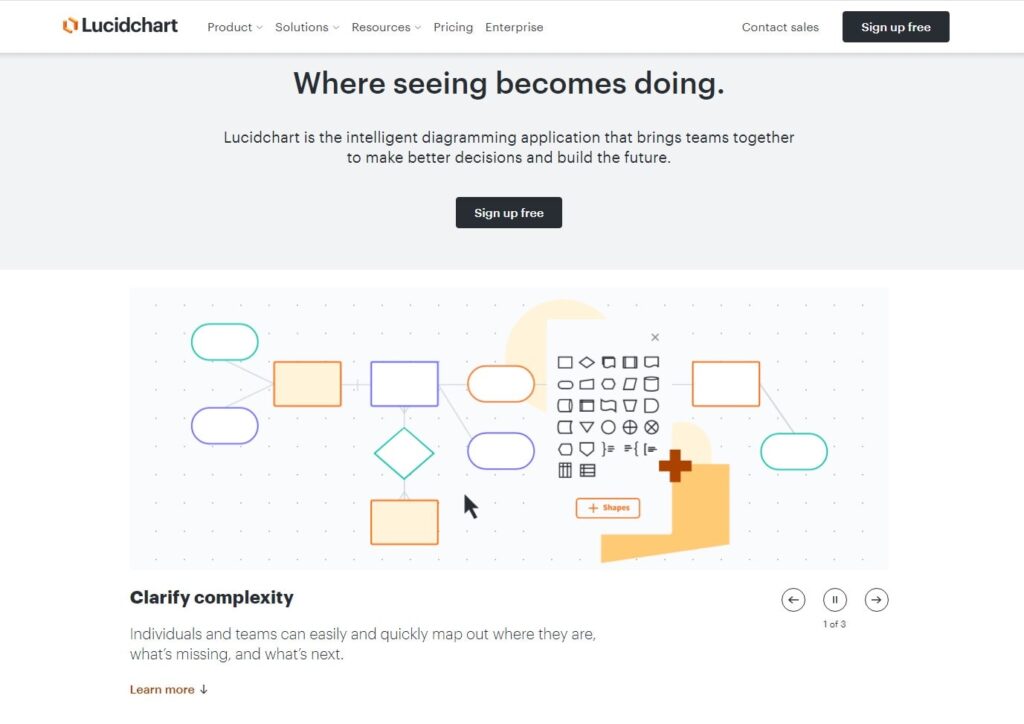
You can use it to add strategies and tactics that you can implement in different stages of your customer journey.
Meanwhile, Hotjar can show you how customers interact with your website or web-based app.
It can help you understand your user’s behavior and identify friction points.
Additionally, you can create surveys and polls inside HotJar and gain user feedback.
5. Set your goals and KPIs
We all know that having clear goals lets us stay on track with our primary objectives.
That’s why you need to always include them when planning your marketing strategy.
After all, they serve as milestones to determine whether your SaaS company is moving forward or not and what you can do if it isn’t.
Other useful data you can take a look at are Key Performance Indicators (KPIs).
KPIs are countable metrics that help you measure the success and effectiveness of your marketing efforts.
For SaaS marketing, some relevant KPIs include:
- Website traffic;
- Free trial sign-ups;
- Conversion rates;
- User engagement;
- Churn rate, and;
- Customer lifetime value (CLV).
You can also check this infographic by Databox to see the common ones that SaaS businesses measure monthly.
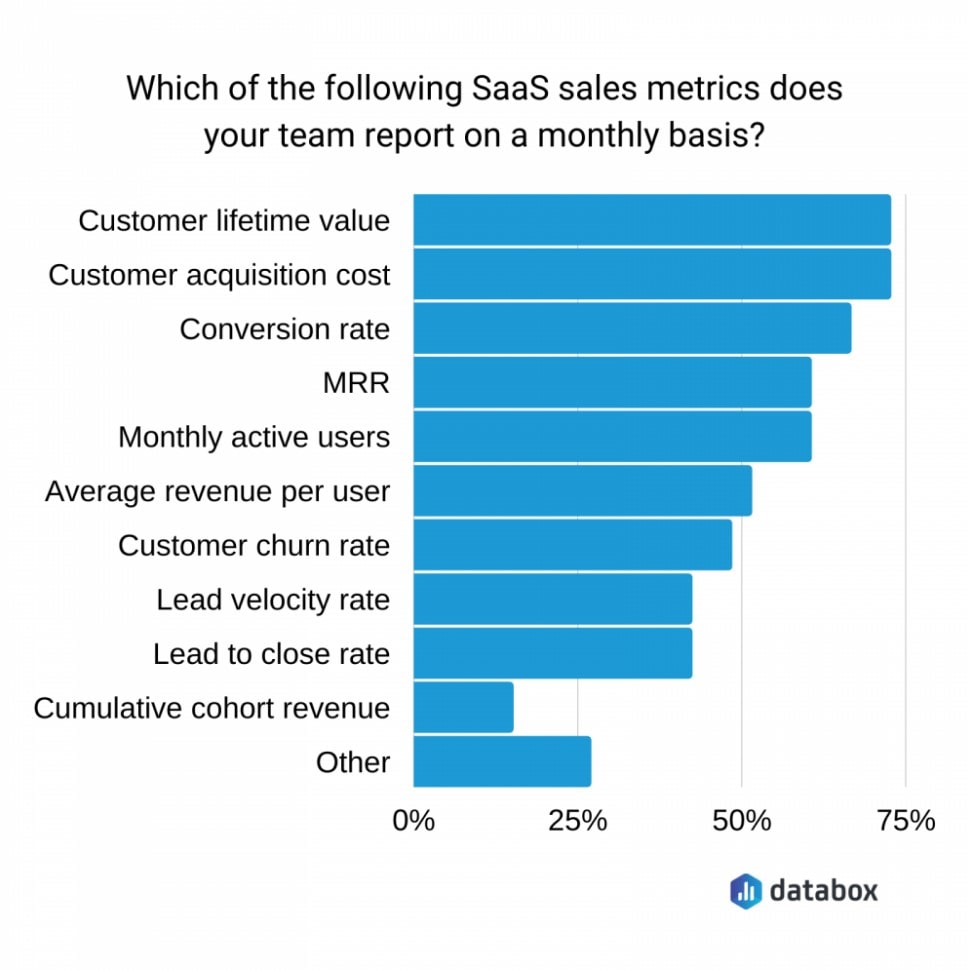
Setting achievable targets for each KPI can help you create a framework for evaluating your progress and identifying areas for improvement.
Some tools you can use to view and study these metrics are Google Analytics and Mixpanel.
Google Analytics allows you to identify website traffic, user behavior, and conversation rates.
Meanwhile, Mixpanel helps you track user engagement, retention, and conversion rates within your app so you can optimize your product and marketing efforts based on user behavior.
6. Use tactics to build your strategy
Using a combination of proven marketing channels to get more leads and encourage trial users is essential in the pre-launch stage.
While you don’t need to apply every SaaS marketing tactic at once, we still recommend having a diverse mix.
You can start with two to three strategies and implement more once you grow your SaaS business.
A graph by Uplift Content, for example, shows that most B2B SaaS companies find case studies as the best method.
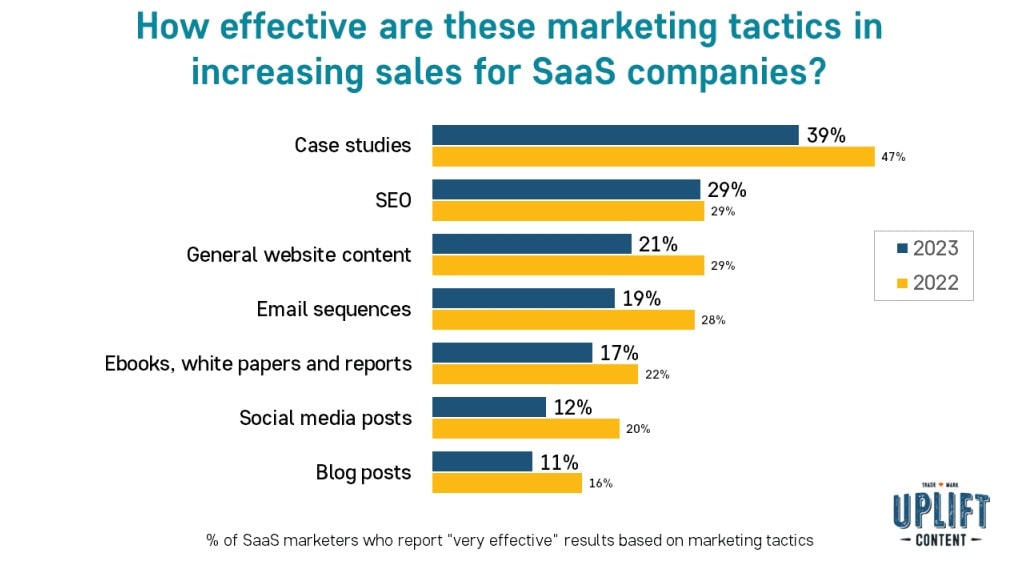
Other effective SaaS marketing channels are SEO and email marketing.
Note, though, that trying different methods isn’t enough.
You must also check each performance and improve your strategy based on the results.
This is because what works for others might not work for you.
Additionally, staying updated with micro-SaaS market trends will enable you to adjust as needed.
This will ensure your marketing efforts remain relevant and impactful.
Post-launch SaaS Product Marketing Strategy
Unlike the pre-launch marketing strategy, the primary objectives of post-launch are:
- Keeping users subscribed;
- Encouraging them to upgrade to pro plans, and;
- Turning satisfied customers into advocates of your software and brand.
In this type of marketing strategy, you have to focus on three onboarding stages: primary, secondary, and tertiary.
Let’s discuss them one by one.
1. Primary onboarding
Primary onboarding is the initial stage of user education and engagement. It occurs right after they sign up for your micro-SaaS product.
At this phase, your main goal is to guide new users to discover and use your software’s main features.
Instead of overwhelming them with every aspect, you’ll only highlight the tools that provide immediate value.
Let’s use project management software like Orrderly as an example.
The primary onboarding process for a new user might include the following steps:
- Creating a project,;
- Inviting team members to the project;
- Setting up tasks and deadlines for the project;
- Assigning tasks to specific team members, and;
- Tracking progress and communicating within the platform.
And to conduct effective primary onboarding, you need to provide:
- interactive step-by-step tutorials;
- walkthrough videos, and;
- pop-up checklists.
2. Secondary onboarding
In comparison, secondary onboarding engages users beyond the initial phase.
It focuses on deeper product education and the promotion of its advanced features.
Because of that, this stage is crucial for maintaining user engagement.
It ensures they continue to derive value from your SaaS product and reduce churn rate.
For the same software sample as above, the secondary onboarding steps may include:
- Creating custom reports to track project performance;
- Integrating the software with other tools, like calendar apps or team communication platforms;
- Setting up task dependencies and timelines for more complex projects, and;
- Scheduling recurring tasks to streamline workflow.
To move your users to the secondary onboarding stage, there are three strategies I’d like to share.
The first is to share content that will show how secondary features work.
It can be in the form of blog posts or video tutorials.
User webinars are also effective at this stage. Hubspot even mentioned that 31% of webinars are designed for onboarding and retention.
This makes them a great tool for secondary onboarding.
Another method is to use in-app notifications or email campaigns to inform users of new updates.
Lastly, offer personalized customer support.
You can provide this through live chat, email, or phone.
This is a must-have, as it can help you address users’ questions or issues.
Some of the best tools you can use are Loom, Intercom, and Userpilot.
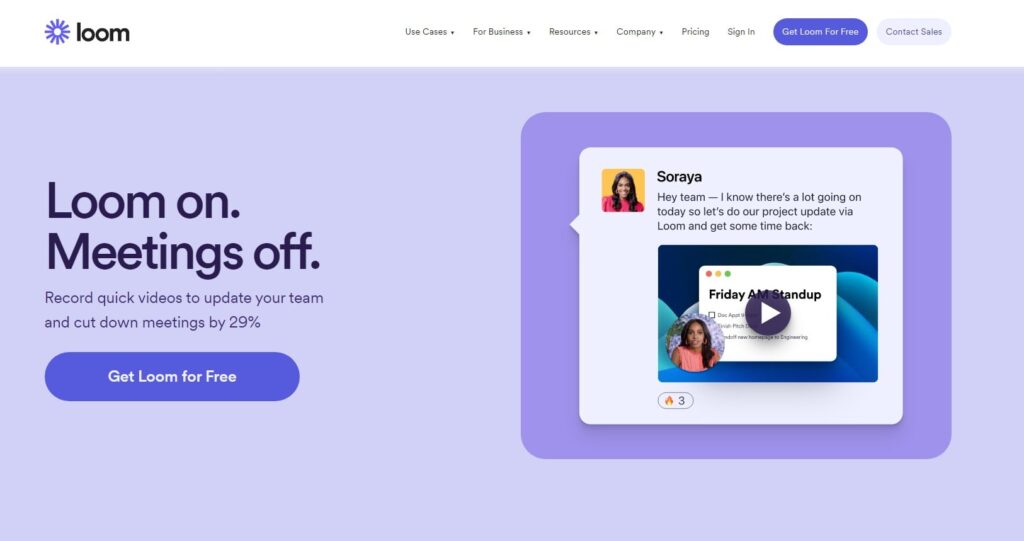
Loom is a video recording tool you can use to create personalized tutorials.
Intercom is a customer communication platform that engages users with AI chatbots, messages, and emails.
Meanwhile, Userpilot is a user onboarding tool that offers tools for interactive walkthroughs, tooltips for user engagement, and in-app experiences.
3. Tertiary onboarding
Last but not the least is tertiary onboarding. It’s the ongoing process of nurturing long-term relationships with your customers.
Your goal here is to help increase customer success so that your users will remain satisfied and become loyal advocates of your micro-SaaS.
Just like the secondary onboarding, it focuses on maintaining engagement and reducing churn rates.
But this is also where you start driving referrals.
Some of the approaches you can take here include:
- Conducting regular health checks – This means assessing user satisfaction and proactively addressing any concerns or areas for improvement.
- Introducing referral programs – Here, you can encourage customers to share your product with their network by providing rewards.
- Sharing customer success stories and testimonials – This is a phase where you showcase how your product provides value and delivers.
Tertiary onboarding is as important as the first two onboarding stages.
After all, users here have been using your SaaS product for quite some time.
Therefore, chances are high that they are satisfied with the software and understand well the value it brings to their lives.
They are also likely to be more experienced with its features, from its primary to advanced functionalities.
So, building long-term relationships with these customers can help you a lot in sustaining growth and retaining a loyal user base that promotes your micro-SaaS.
Reasons Why Your SaaS Product Marketing Funnel Is Leaking
A leaky sales funnel means qualified leads drop off and never reach your sales team.
And if you don’t fix it, it will lead to revenue loss, higher acquisition costs, and hindered growth.
Several factors can contribute to this issue.
One key reason for a leaky sales funnel is an ineffective marketing message.
It can be that your copy doesn’t resonate with your target audience, or it doesn’t convey the unique value of your product.
Because of this, potential customers may lose interest and fail to move down your funnel.
Another contributor is poor user experience.
A confusing website, interface, or onboarding process can cause users to become frustrated.
This can result in them choosing competitor products instead.
Apart from that, insufficient lead nurturing is yet another reason that can cause funnel leaks.
SaaS companies can lose potential users if they do not actively engage and nurture leads. This can decrease conversion rates.
Additionally, inadequate customer support can contribute to a leaky sales funnel.
Customers who do not receive timely and effective support may become dissatisfied, as they may feel neglected or unimportant.
To solve that, introducing different channels can help you promptly address customers based on their needs.
For instance, live chat is perfect for those who want answers immediately, while email support can be ideal for those who need more complex yet not urgent issues.
Lastly, it’s possible that you lack a clear call-to-action (CTA).
Marketing materials or websites without visible CTAs can confuse customers.
Without CTAs guiding prospects toward the desired action, they will lose interest.
And trust me, they won’t spend time figuring out their next step.
So, you must incorporate clear and persuasive CTAs in the right places.
What to Do When Your SaaS Product Marketing Funnel Is Leaking?
To identify and solve leaks in your marketing funnel, you should:
- Track KPIs at each funnel stage to track conversion rates and drop-off points.
- Conduct regular user testing or A/B testing.
- Collect feedback to uncover pain points and areas for improvement.
- Analyze user behavior data (e.g., website analytics, in-app usage) to identify patterns that may state problems or opportunities.
- Refine your marketing messages to resonate better with your target audience.
- Develop and implement lead nurturing strategies to engage leads at every funnel stage.
How to Measure the Impact of SaaS Product Marketing on Your Business?
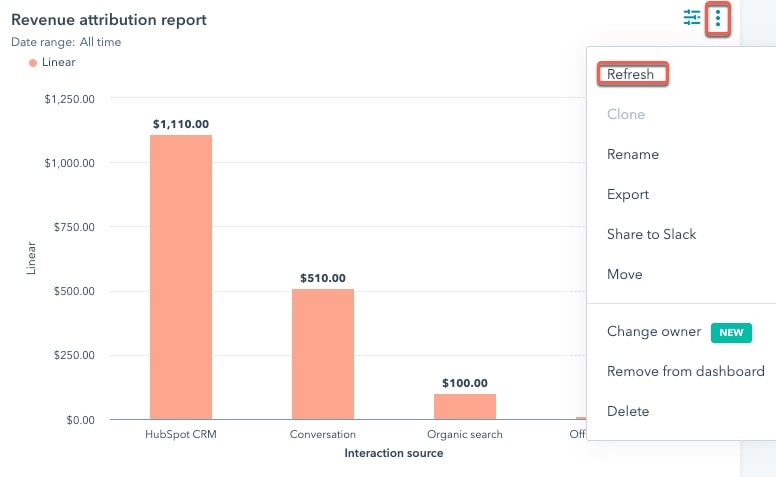
You can do this by using tools that can help you observe your KPIs so that you’ll gain more data-driven insights and identify issues better.
Google Analytics, Mixpanel, and HubSpot are some great software to start with.
These platforms offer comprehensive analytics and reporting features. Not only that, but they can help you watch and assess your marketing activities more effectively.
There are various metrics that you can measure, but I suggest you start with the following:
- Customer Acquisition Cost (CAC) – On average, this is how much money you spend to get a new customer.
- Monthly Recurring Revenue (MRR) – This tells you how much money your business makes every month.
- Churn Rate – This shows the percentage of customers who stop using your service within a specific time.
- Lifetime Value (LTV) – This is the total amount of money a customer brings in when using your service.
- Conversion Rate – This tells you the number of people who become paying customers at different stages.
Using evidence-based insights in your marketing strategy offers many benefits.
For example, it allows you to recognize patterns in user behavior.
This will help you customize your messaging to better appeal to your audience.
Additionally, you can plan your marketing budget and put more into effective strategies.
Final Thoughts on SaaS Product Marketing
In summary, applying pre- and post-launch strategies for your micro-SaaS and SaaS product marketing is important to achieve growth.
But, you must also ensure that your steps and methods are clear and data-driven.
By applying the best practices above, you should be able to maximize your marketing efforts and set your business on the path to long-term success.
If you wish to know more about micro-SaaS, we have outlined five eBooks you can read today or check out our article on micro-SaaS success stories for practical ideas.
But if you need a team to help you grow your SaaS business, feel free to reach out and let us know how we can help.
Our portfolio includes GroupLeads, Vidscout, Orrderly, and Chatsilo.

